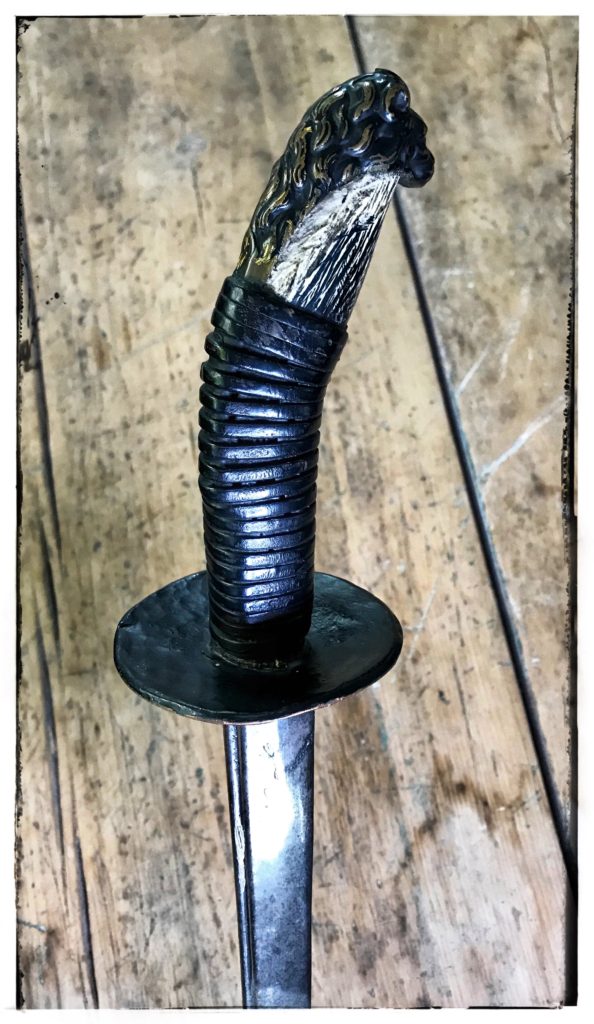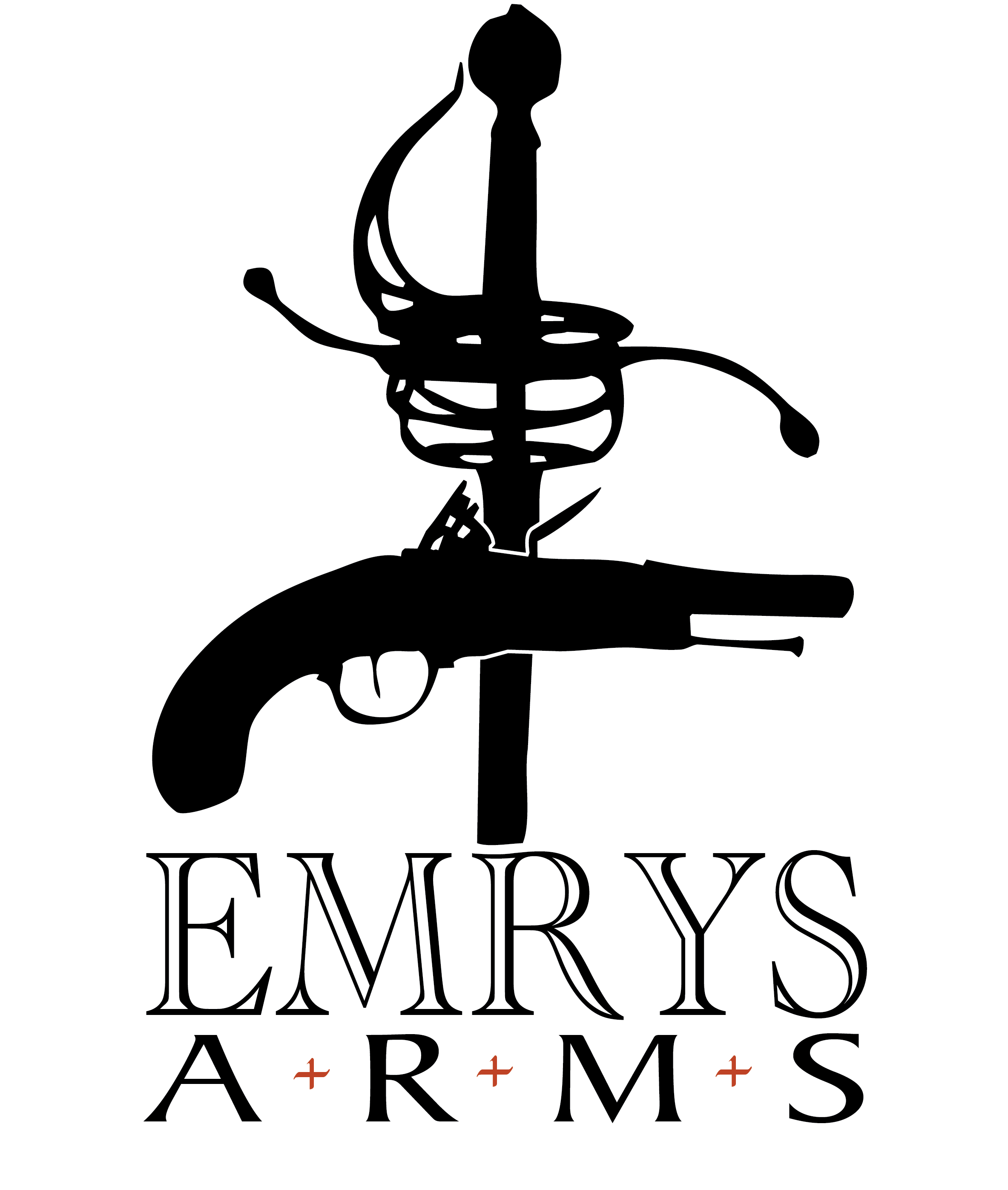| Collection #: | 2020.017 |
|---|---|
| Type: | Navy |
| Nationality: | British |
| Pattern: | Remnants of an 1827 Pattern |
| Date: | 1827 - 45 |
| Hilt: | Black painted copper and brass(original backstrap/pommel) |
| Blade Length: | 74cm |
| Blade Width: | 3.2cm |
| Overall Length: | 91.5cm (36") |
| Maker: | No Markings |

A Heinz 57 of a sword out of Nova Scotia. I considered not including it on this site as you are unlikely to find another like it, but it just feels so darn good in the hand!
It is composed of pieces or remnants of an early Pattern 1827 naval officers’ sword. The lion head pommel / backstrap is screwed into a piece of bone (or antler) and then wrapped with a chord of leather for most of the length. The chord is fastened in place at the top and bottom with a small nail or tack. It has a singular hammered disc guard made of copper which has just the slightest wobble. The whole of the guard is painted black and the paint has worn off on the highlight areas around the edge of the disc guard and on the lions’ head and mane. The bone/horn grip that extends beyond the leather wrap does not seem to have ever head a thorough paint job.
It has a pipe-backed, quill tipped blade. “The Army replaced the thoroughly unsatisfactory pipe-backed blade with the Wilkinson designed flat-backed blade in 1845 after twenty-three years’ service and the Royal Navy made the change a year later” (McGrath, John & Barton, Mark, British Naval Swords & Swordsmanship, page 46). This places the sword in the range of 1827 to 1846 for its original construction. While the blade has darkened with time, it is remarkably free of any rust or corrosion. There are no markings to the blade except an old collectors number which seems to have been applied with an electric pencil, etching it into the ricasso.
I can’t imagine this would have been allowed to be used in military circumstances, or at least I have found no written evidence I can site. However, it is hard to dismiss how balanced and comfortable it feels in the hand. Was it reconstituted by someone having fun? Or did it actually serve a purpose for someone? Most likely we will never know and it must therefor be appreciated simply for what it is and for what it came from.
We use cookies to improve your experience on our site. By using our site, you consent to cookies. Enjoy the cookies...they're delicious...
Websites store cookies to enhance functionality and personalise your experience. You can manage your preferences, but blocking some cookies may impact site performance and services.
Essential cookies enable basic functions and are necessary for the proper function of the website.
Statistics cookies collect information anonymously. This information helps us understand how visitors use our website.
Google Analytics is a powerful tool that tracks and analyzes website traffic for informed marketing decisions.
Service URL: policies.google.com

